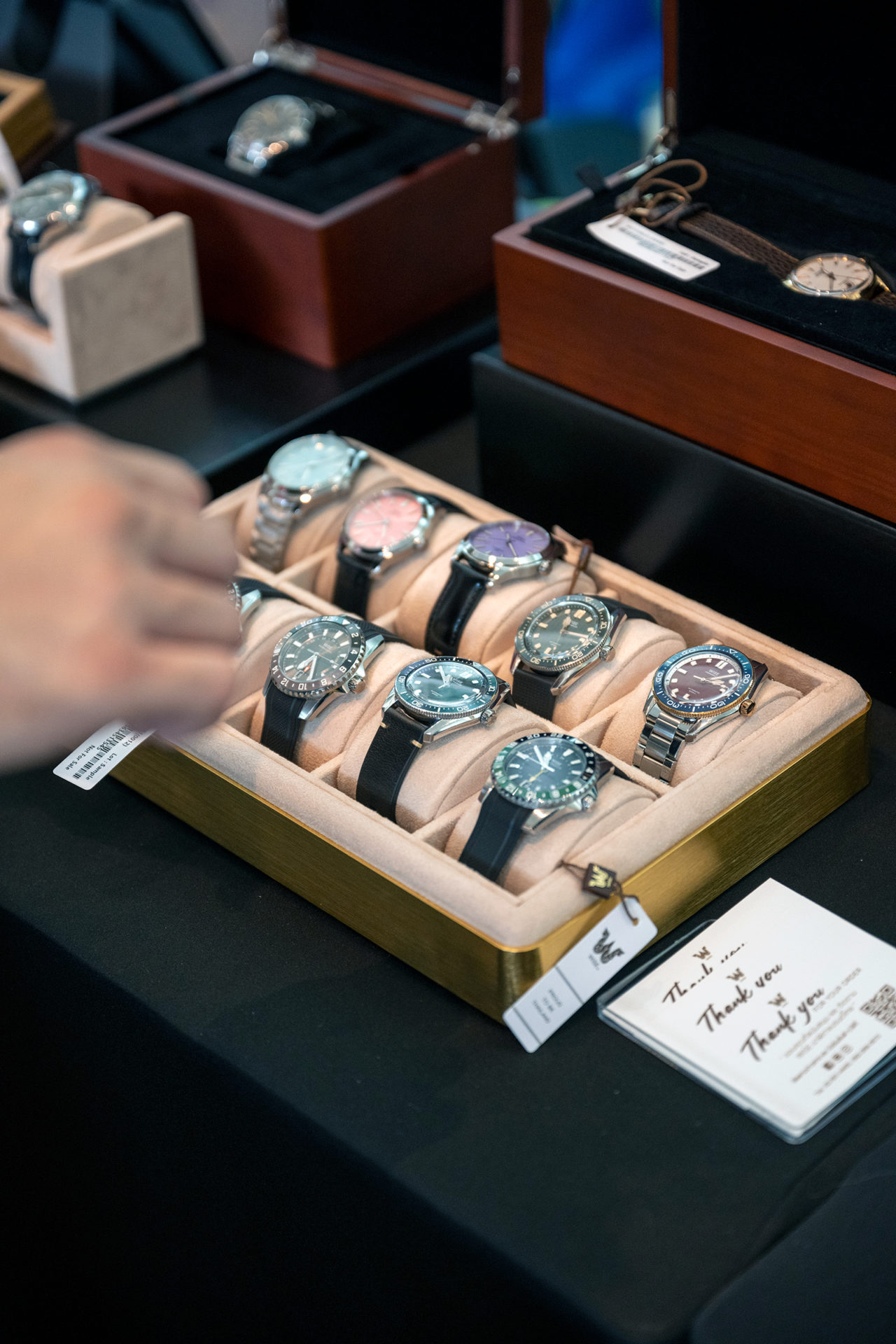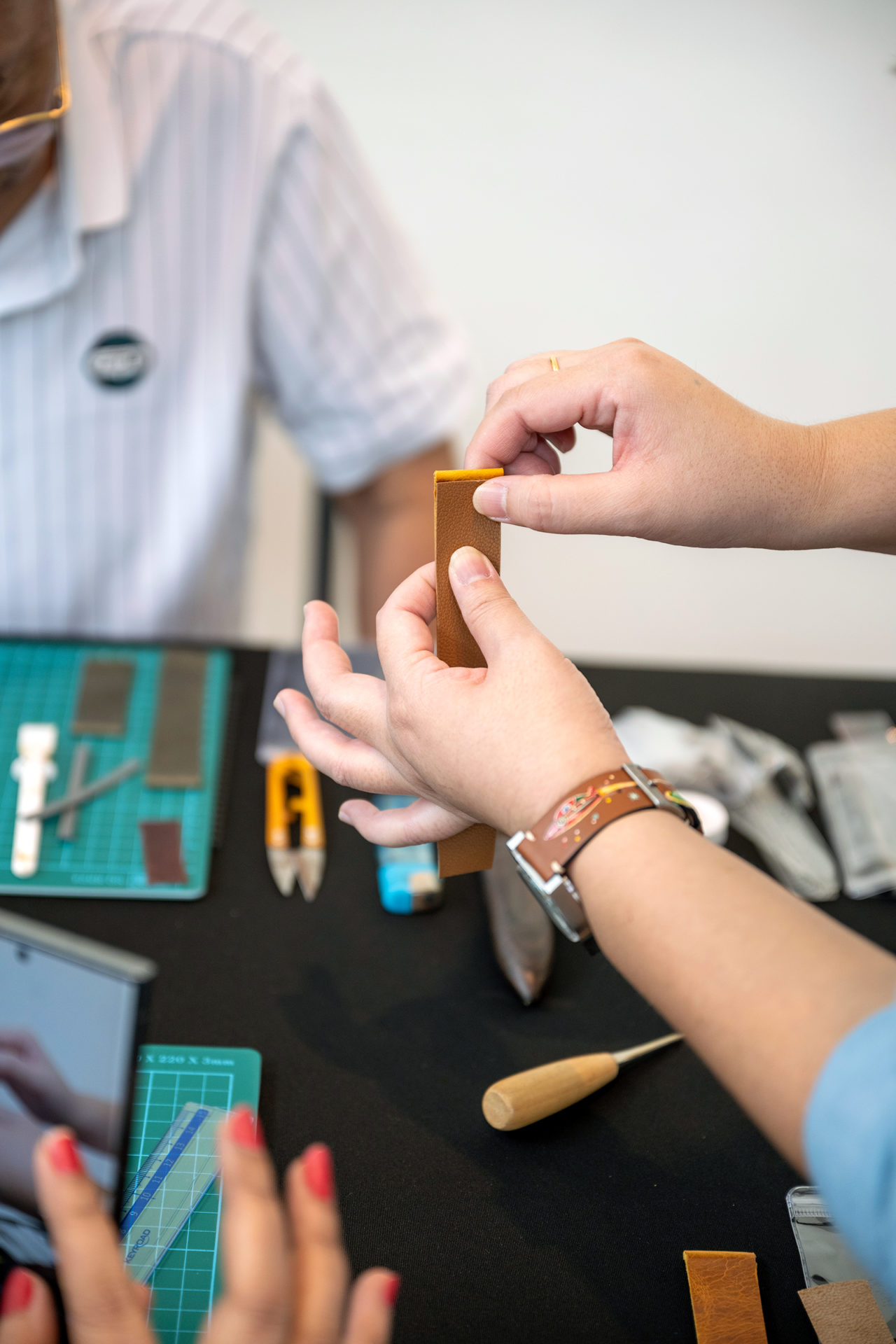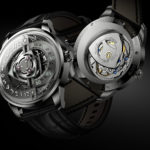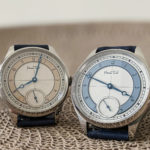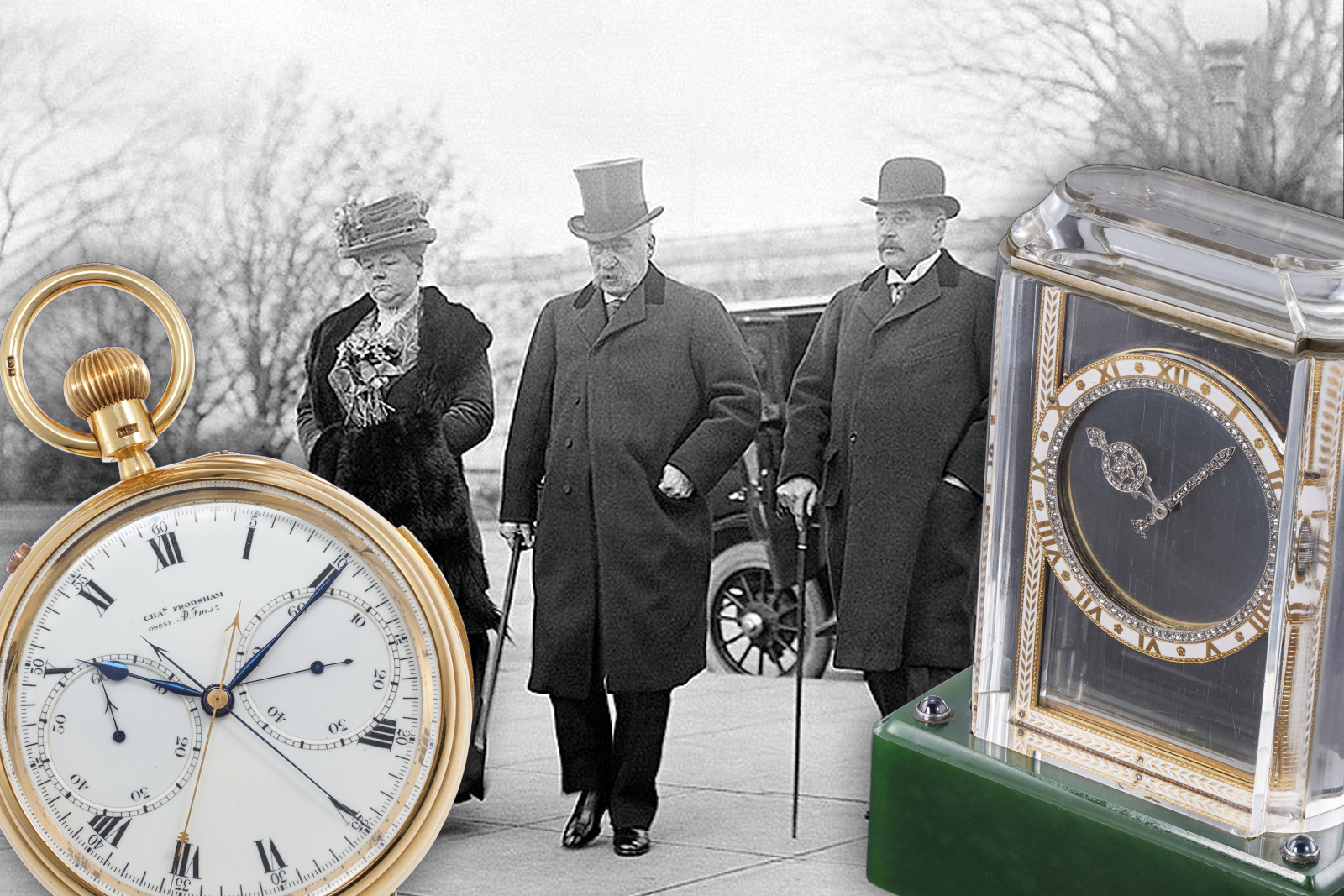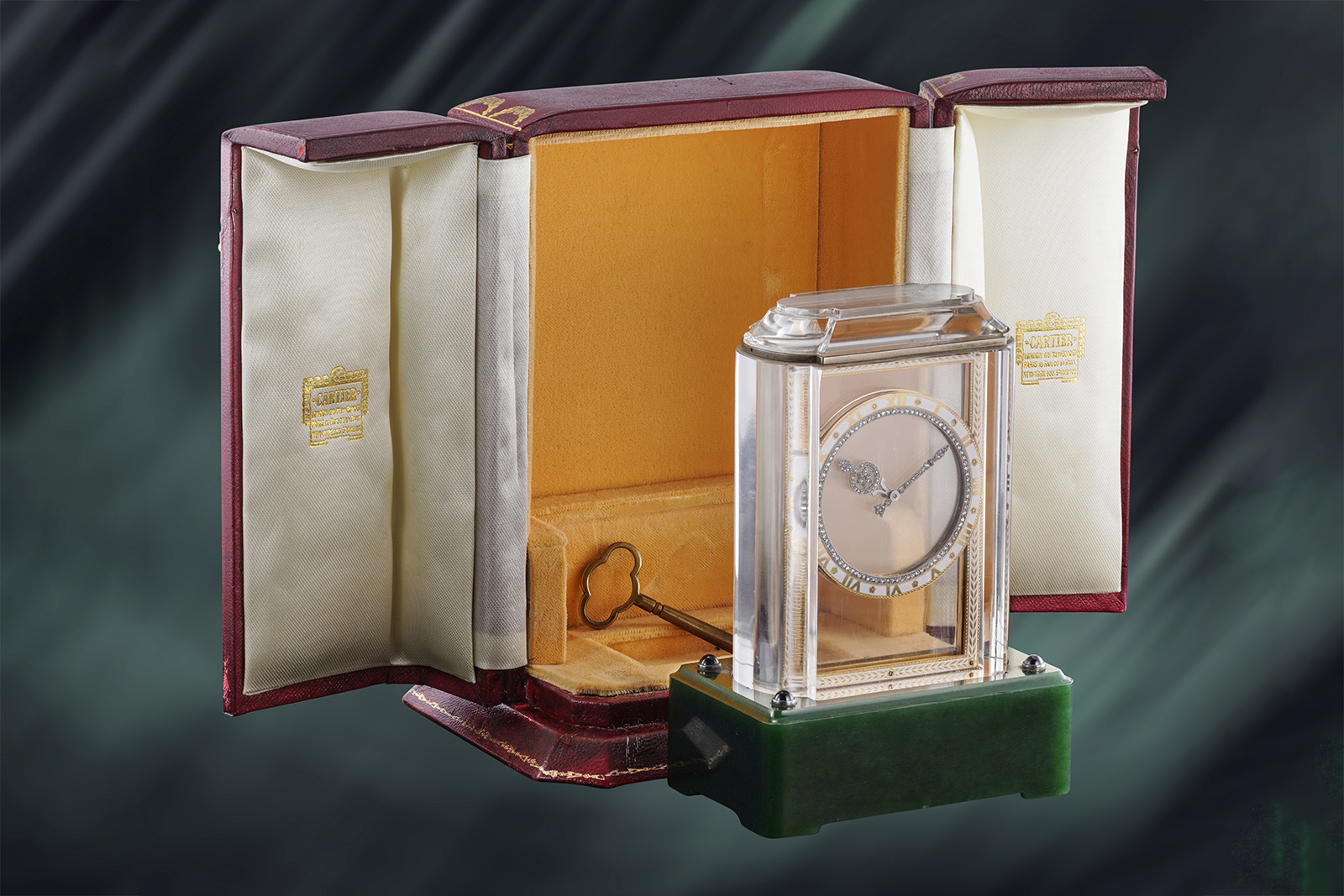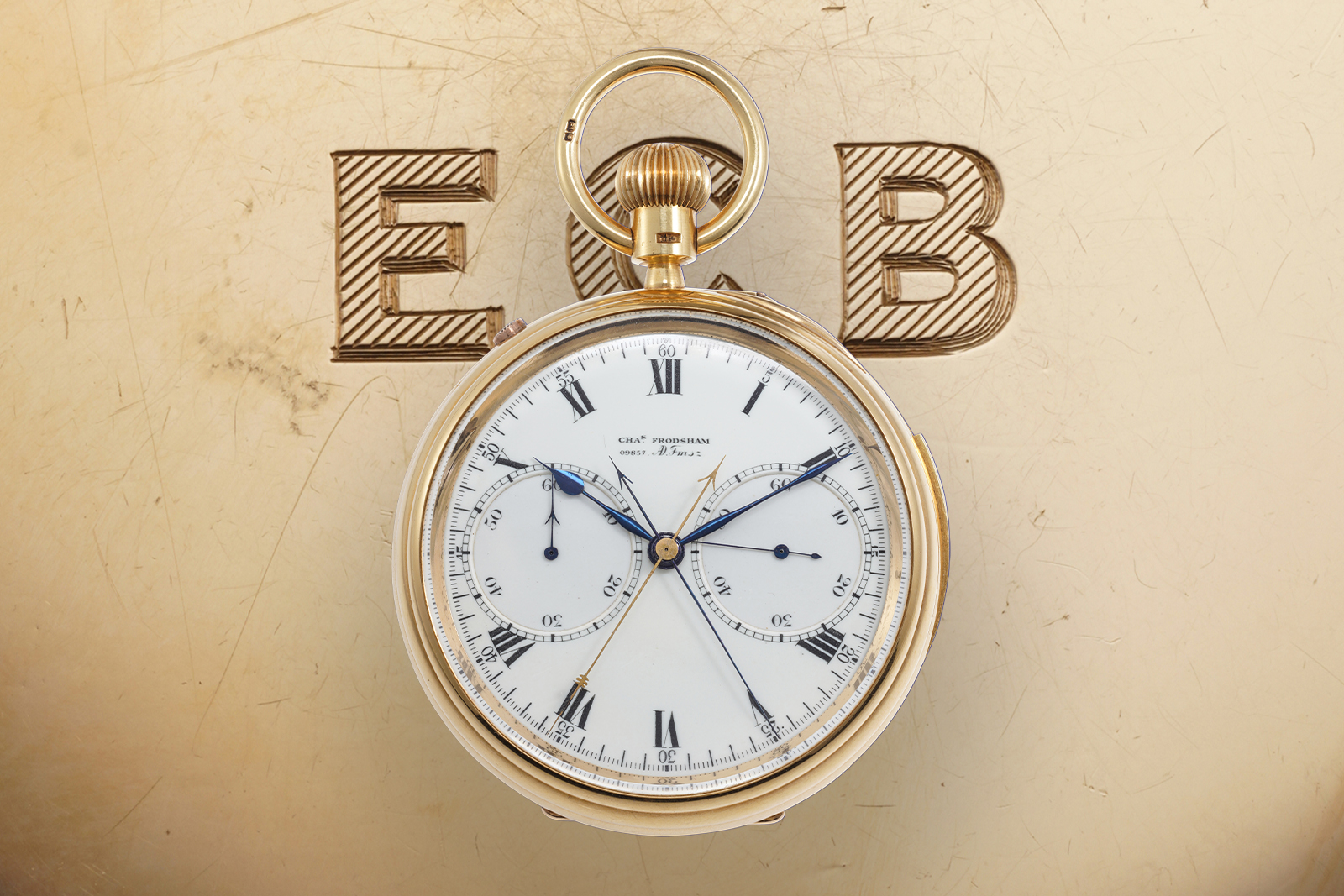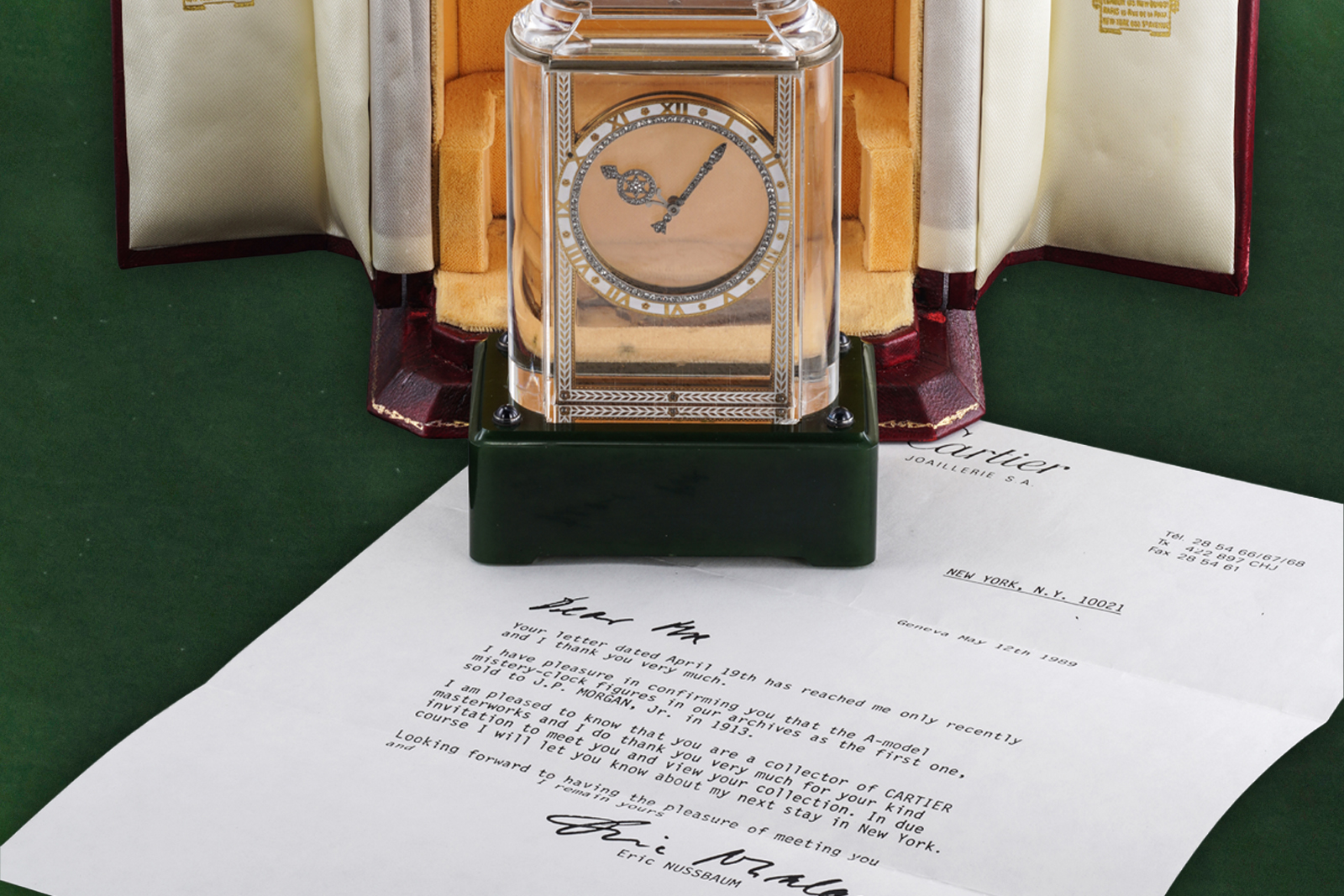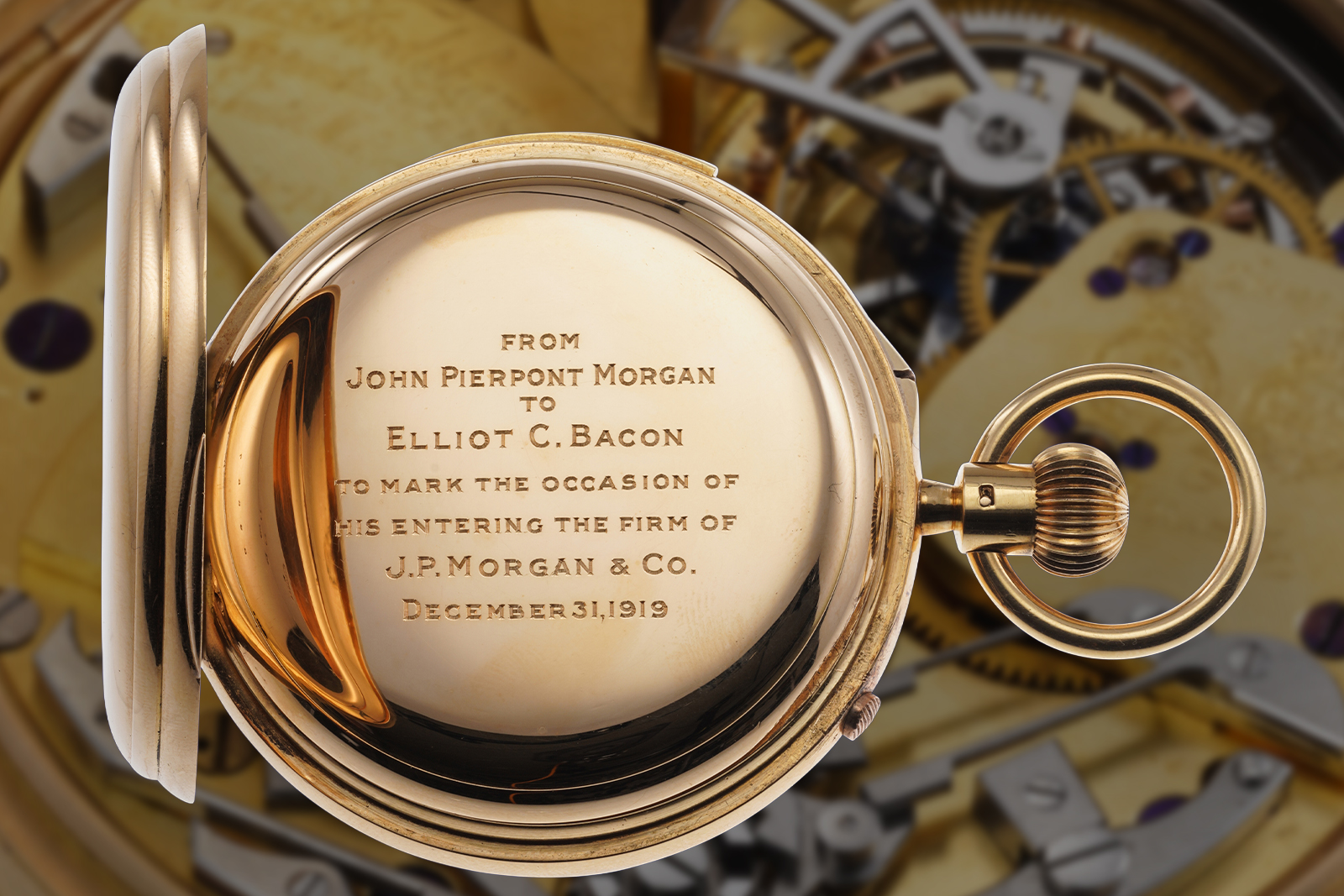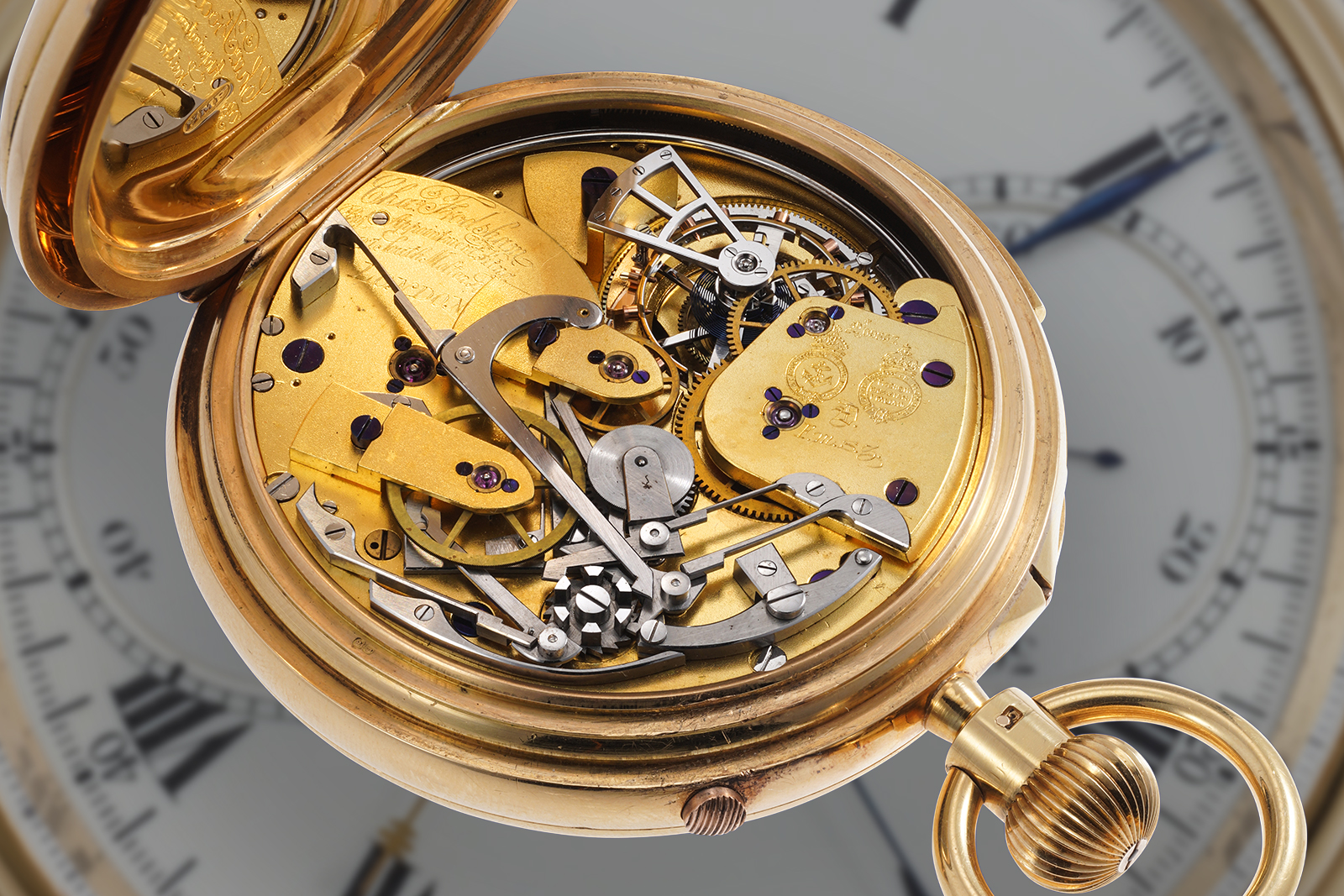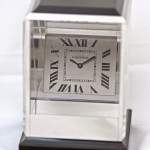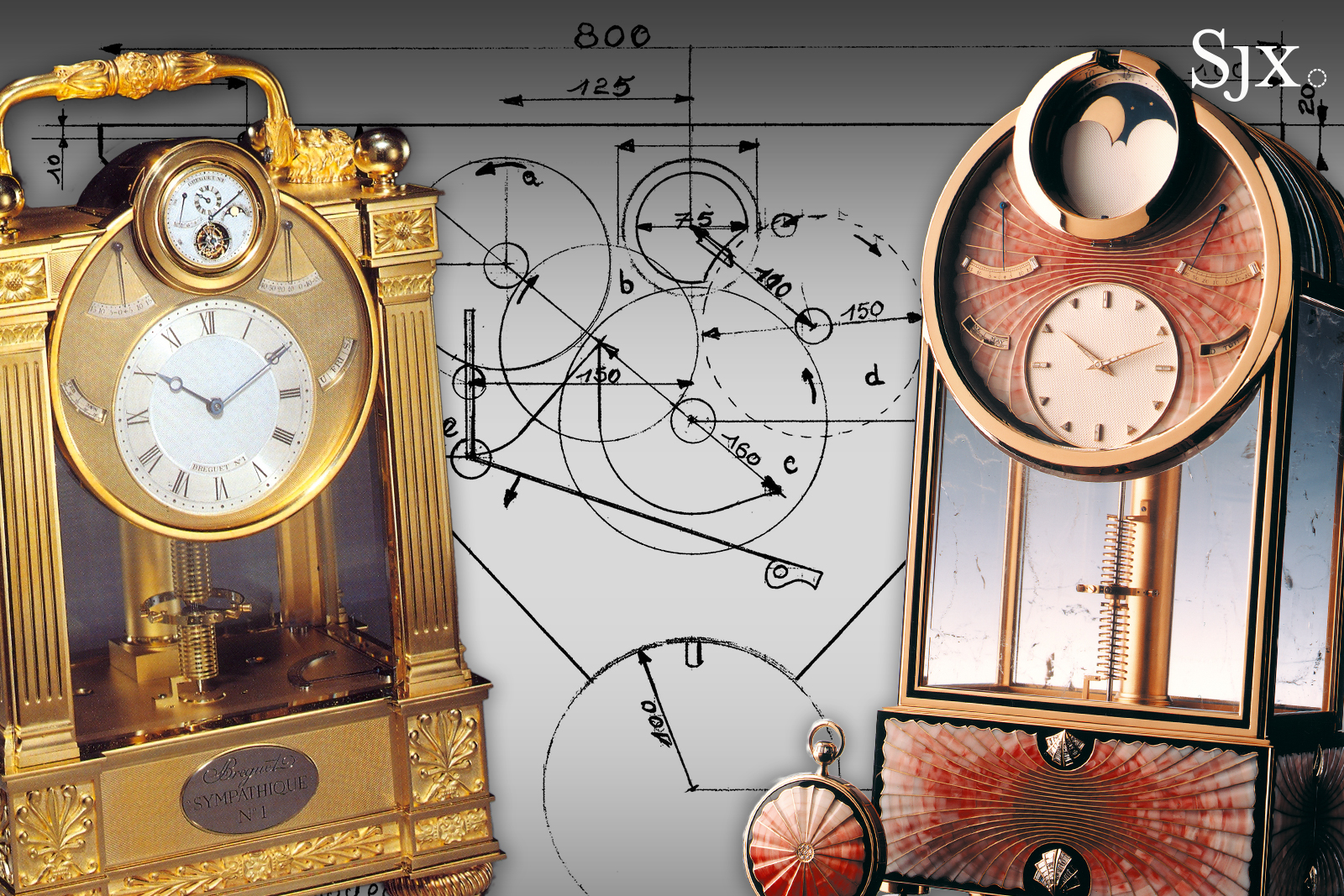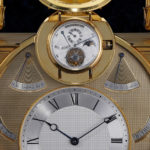Exactly one auction season ago, the Breguet Sympathique no. 1 made by François-Paul Journe became the most expensive timepiece sold in 2025, though the upcoming sales include other F.P. Journe creations that might give the Sympathique a run for its money.
Inspired by Abraham-Louis Breguet’s greatest invention, the Sympathique no. 1 sold in May 2025 at Phillips in Geneva for CHF5.51 million including fees, at the time equivalent to US$6.61 million, to none other than François-Paul Journe. The price was just shy of the US$6.8 million that the Duc d’Orleans Sympathique sold for in 2012 – the buyer of that was the Patek Philippe Museum.
François-Paul was determined to have Breguet Sympathique no. 1 for his upcoming F.P. Journe museum that is slated to open in 2026. Despite bearing another name on the dial, the clock will take pride of place in the museum, underlining its importance to the history of F.P. Journe.
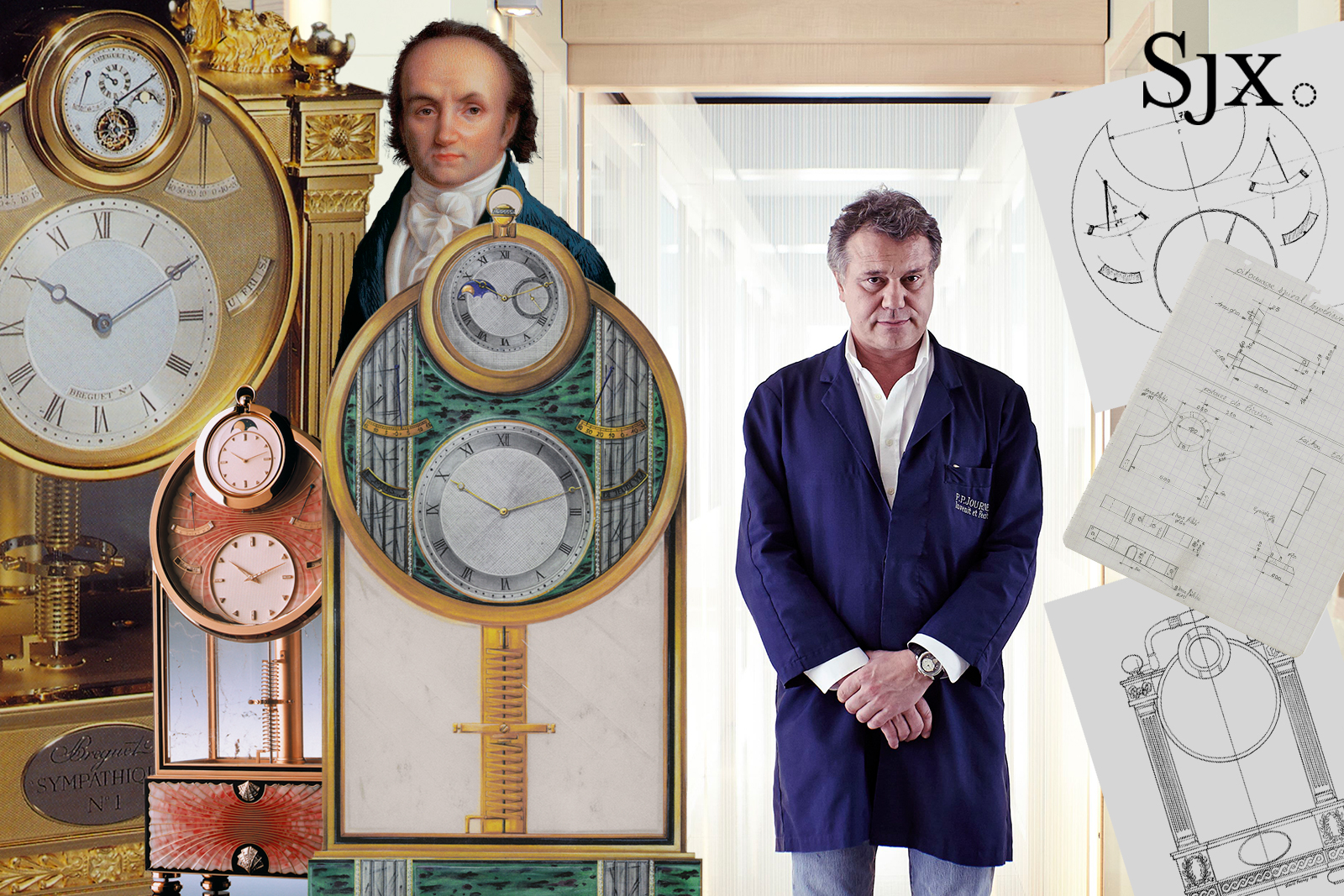
The tale of F.P. Journe as a brand is naturally inseparable from the eponymous watchmaker. Like his inspiration, Abraham-Louis Breguet, François-Paul Journe is more than a watchmaker, he is an entrepreneur who has built a brand, a legacy, and more than likely, a place in history.
From the very beginning, decades ago as a young watchmaker in Paris, François-Paul Journe already possessed the vision that has now come to pass. Inextricably intertwined with that vision and the story of François-Paul Journe is Breguet Sympathique no. 1, for its origins encapsulate the story of François-Paul Journe’s ambitions, struggles, and long road to success.
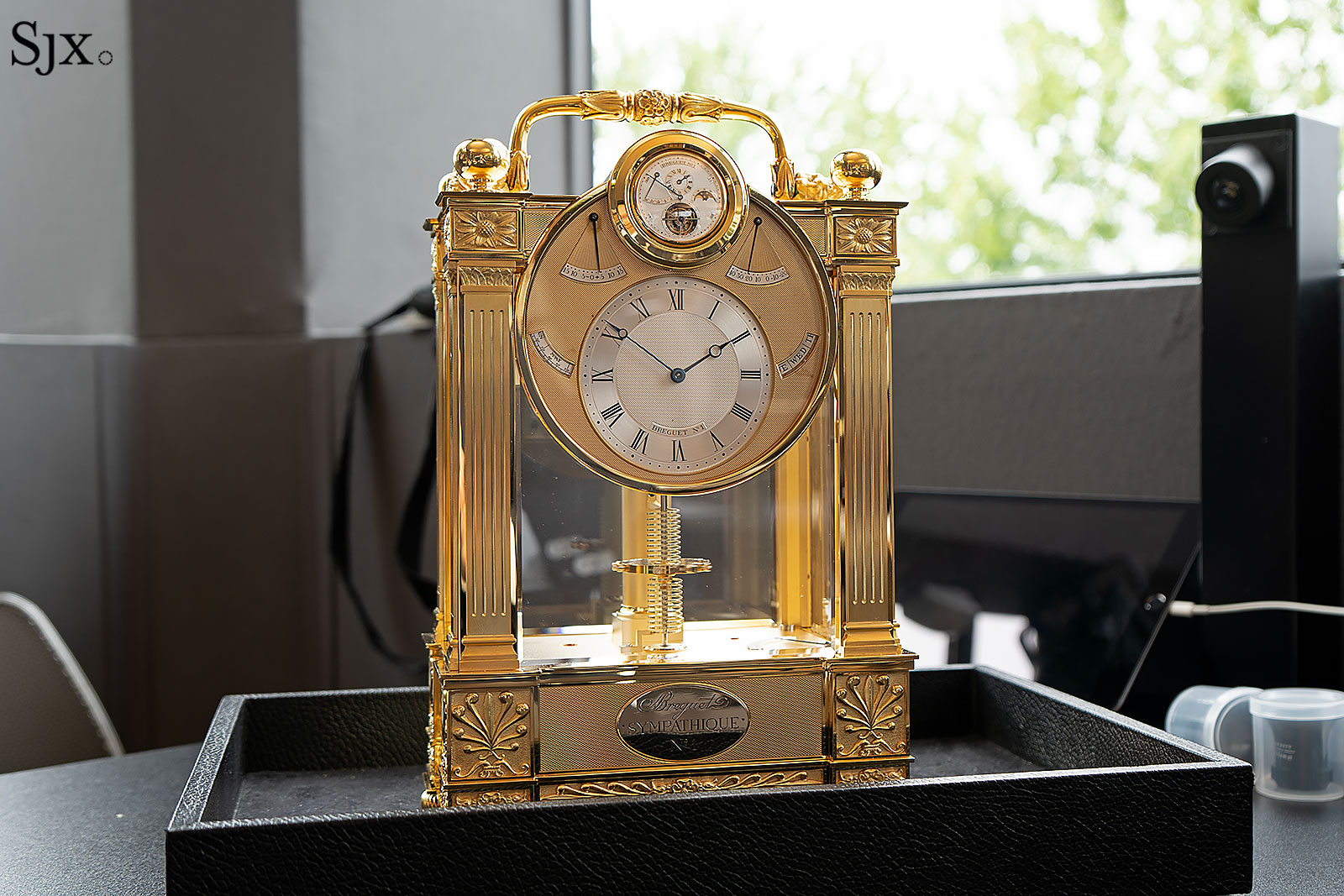
Breguet Sympathique no. 1, made by François-Paul Journe
Ambition and Asprey
In the early 1980s, François-Paul Journe was a journeyman watchmaker in his twenties who had moved to Paris not too long before from Marseille. What he lacked in age, François-Paul made up for in ambition: a desire to equal or even surpass the great A.-L. Breguet. There is no doubt that even then, in his heart of hearts, François-Paul believed his name would be written alongside that of A.-L. Breguet in the Valhalla of watchmaking.
Perhaps, back in the 1980s, there were those who thought such ambitions made François-Paul delusional. Perhaps he decided to prove them wrong, or knew they would turn out to be wrong anyway. What is certain is that as a young watchmaker in his twenties, François-Paul set out to create his own Sympathique clock, arguably the first such clock built in contemporary watchmaking.
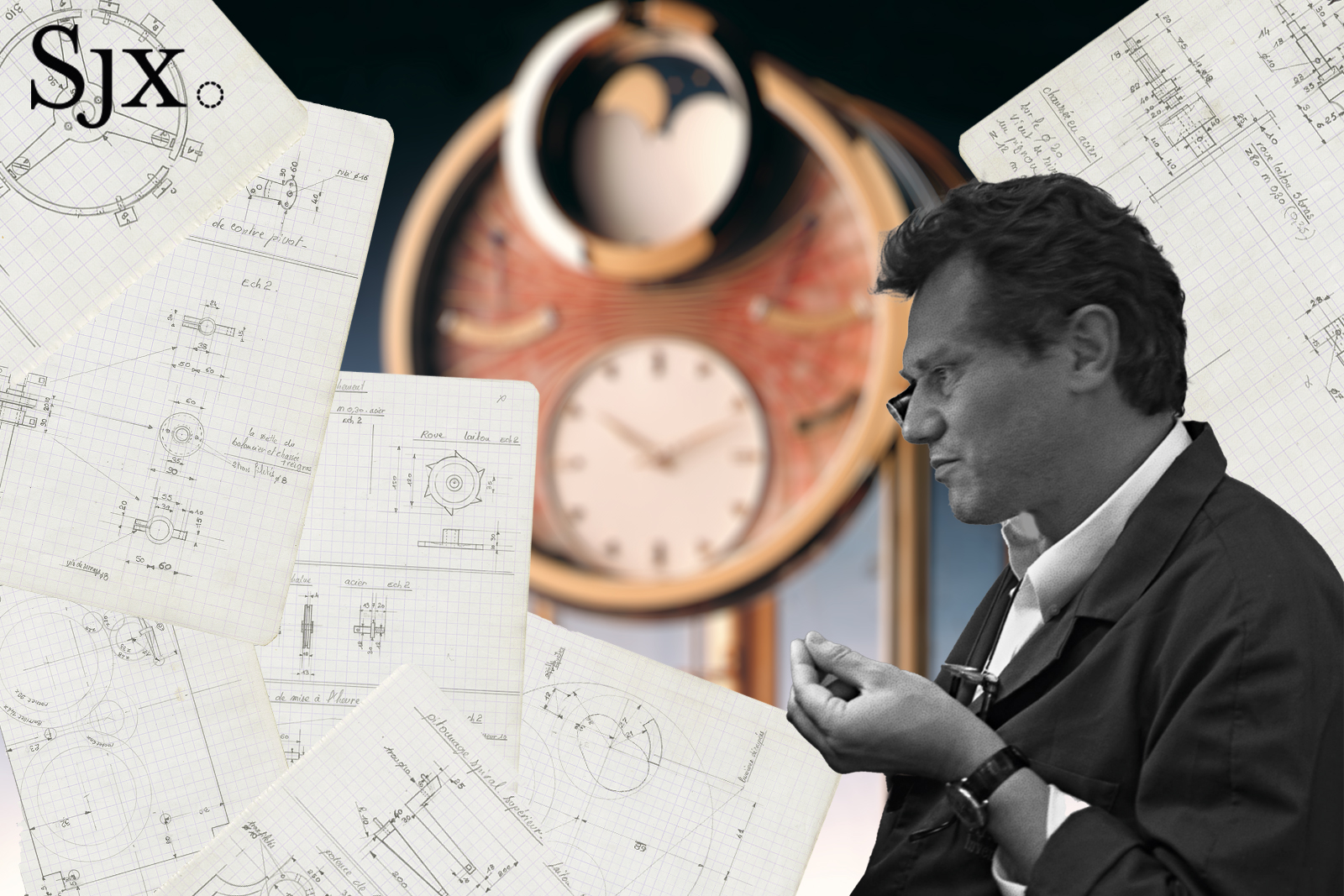
François-Paul’s hand-drawn technical plans for the Sympathique
“I already had the Sympathique in mind when I first met John Asprey [in the early 1980s],” recalls François-Paul. His frequent visits to Asprey’s store on London’s posh Bond Street provided inspiration.
“John Asprey showed me the Sympathique [made for Prince Anatole Demidoff of Russia in 1830], and a beautiful clock from the British royal family,” continues François-Paul, “I also admired the Sympathique in the British Museum”.
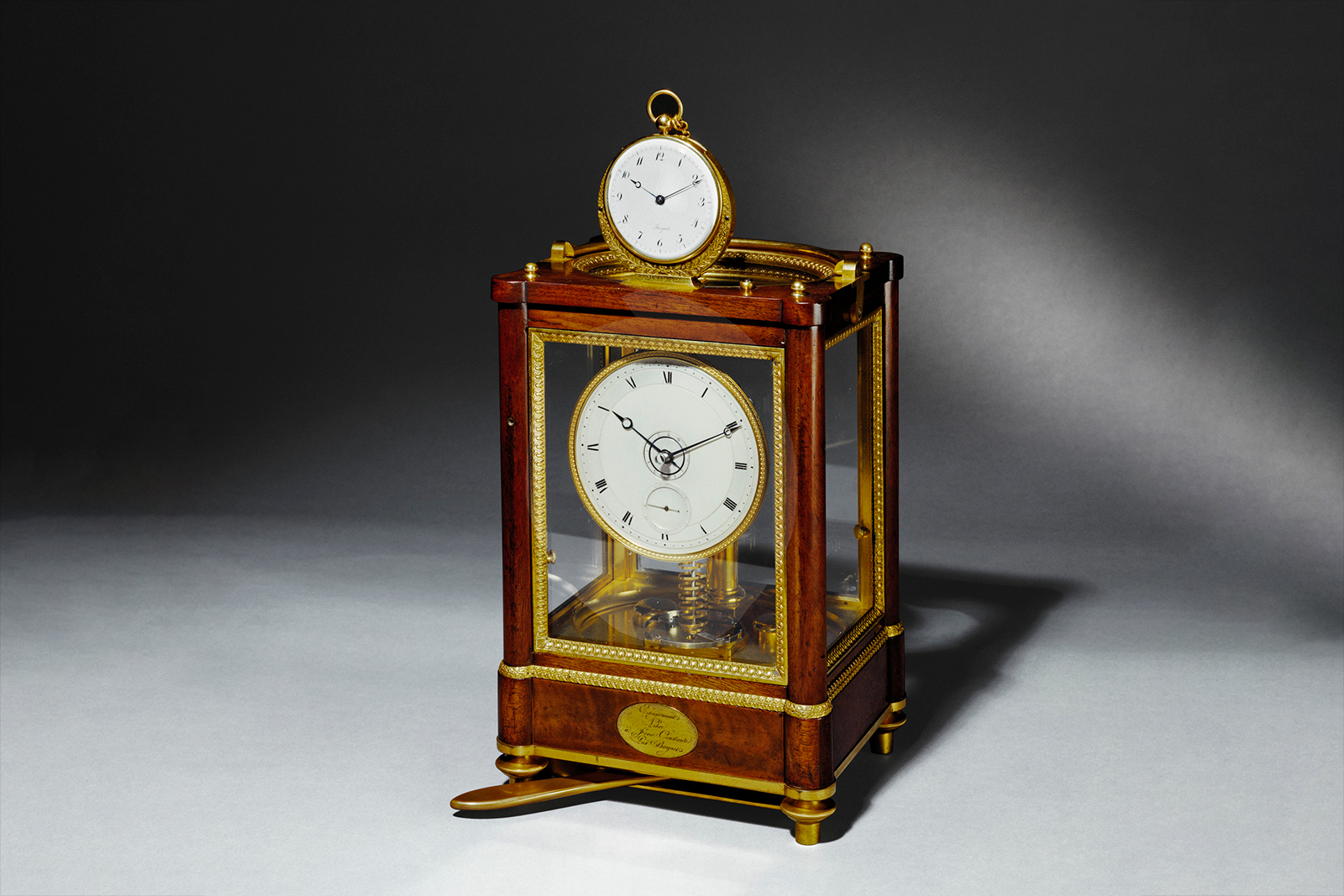
Breguet Sympathique no. 666, sold to the Prince Regent in 1814 and now part of the Royal Collection of the United Kingdom. Image – The Royal Collection Trust
“I constructed my first Sympathique in 1987 for John Asprey in London; I planned to create just one clock for John Asprey, so I drew just one design in coral stone,” says François-Paul, “But three days before presenting the project, I woke up in the middle of the night in a panic: ‘What if he doesn’t like pink?’”
“So I decided to prepare another drawing in jade, and presented both – and he bought both,” he continues, “But it was bad news because it meant a lot more work!”
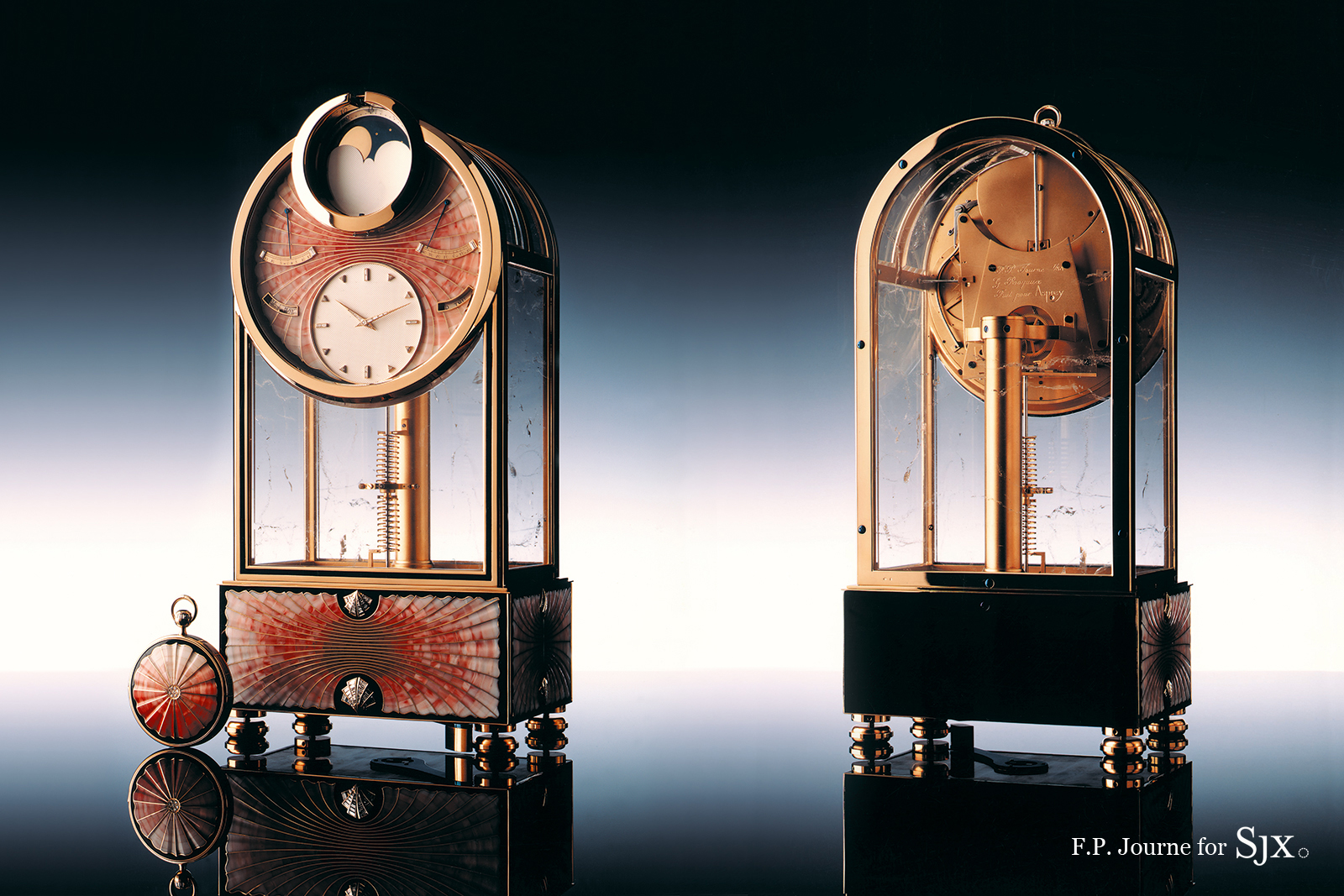
The very first Sympathique built by François-Paul Journe, clad in pink coral
“Those Sympathique clocks in the 1980s were entirely handmade by me; they were much more effort than I had initially planned for,” explains François-Paul, “I was primarily focused on making the movement, and I turned to a jeweller in Paris [Royaux] to handle the case and large brass parts as their workshop had brass milling machines.”
“It took two or three years to finish the three pieces [for Asprey], and the final price was around 800,000 French francs [equivalent to about €120,000],” he notes.
The three clocks, in chronological order, were in pink coral, green jade, and finally zoisite, a mineral described by François-Paul as “a type of ruby embedded within jade”.
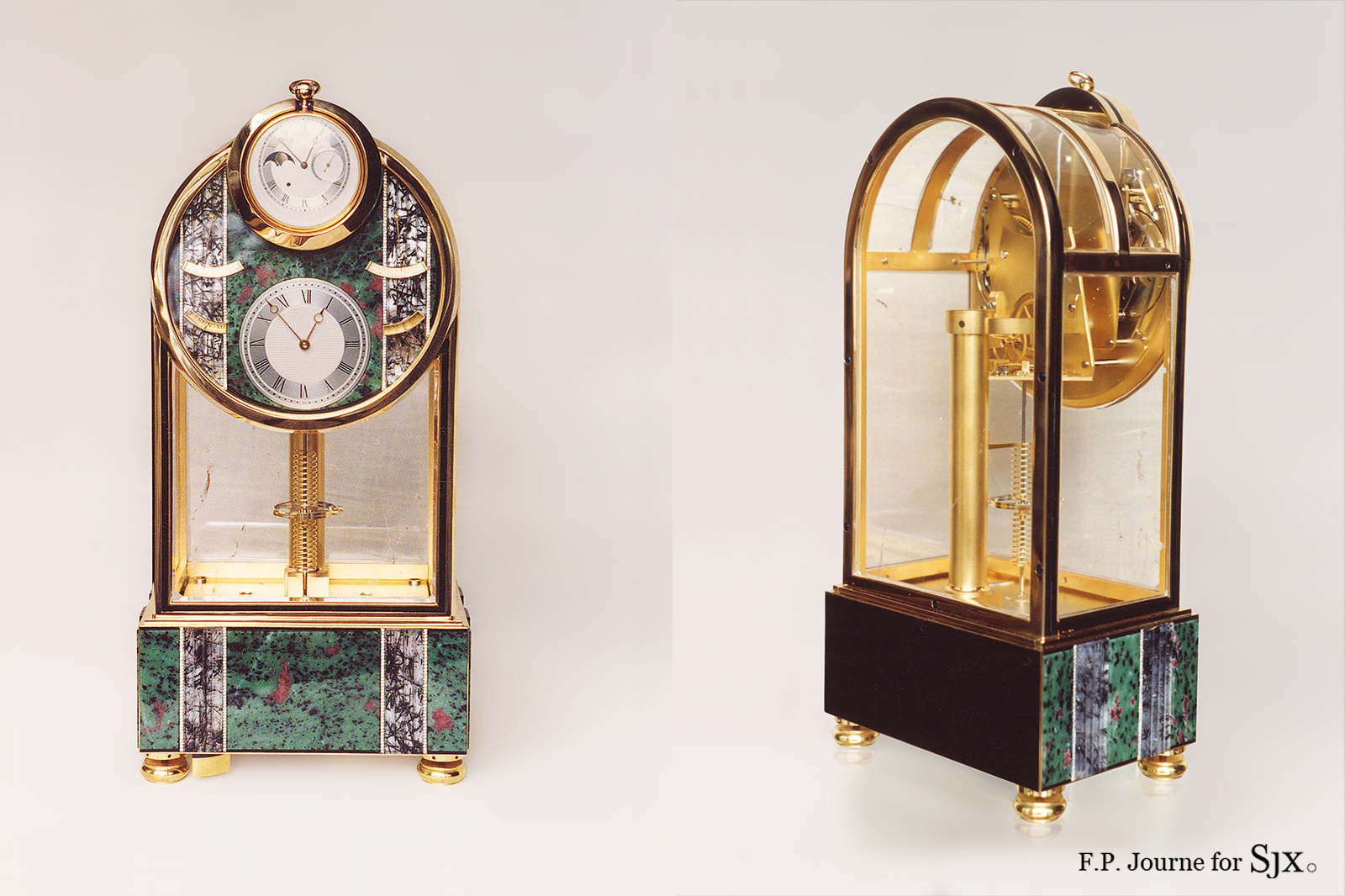
The Sympathique in zoisite
François-Paul was barely past 30 years old then, and he had already completed three Sympathique clocks – which in his opinion surpassed those of A.-L. Breguet.
“I always loved Breguet’s original concept, but it needed significant rethinking. I followed the same fundamental principle Breguet invented, but I completely redesigned the winding mechanism,” says François-Paul.
“In Breguet’s time, the clock needed to be wound every single day because the oils and technology of that era required daily winding for accuracy,” he continues, “But the clock I designed runs continuously for eight days, since when I created this modern version, daily winding was no longer relevant.”
He adds, “The earliest Breguet Sympathique models only set the time but did not rewind the accompanying pocket watch. My design both rewinds and sets the time, making it more accurate for modern techniques.”
“My Sympathique clocks also had the constant force device I invented in 1983 for a pocket watch made for Eugene Gschwind [a noted Swiss watch collector of the time] who wanted a tourbillon with a constant force to piss off George Daniels, who had just completed a watch like that.” The constant force, of course, later made its way into the Tourbillon Remontoir d’Egalite of 1999.
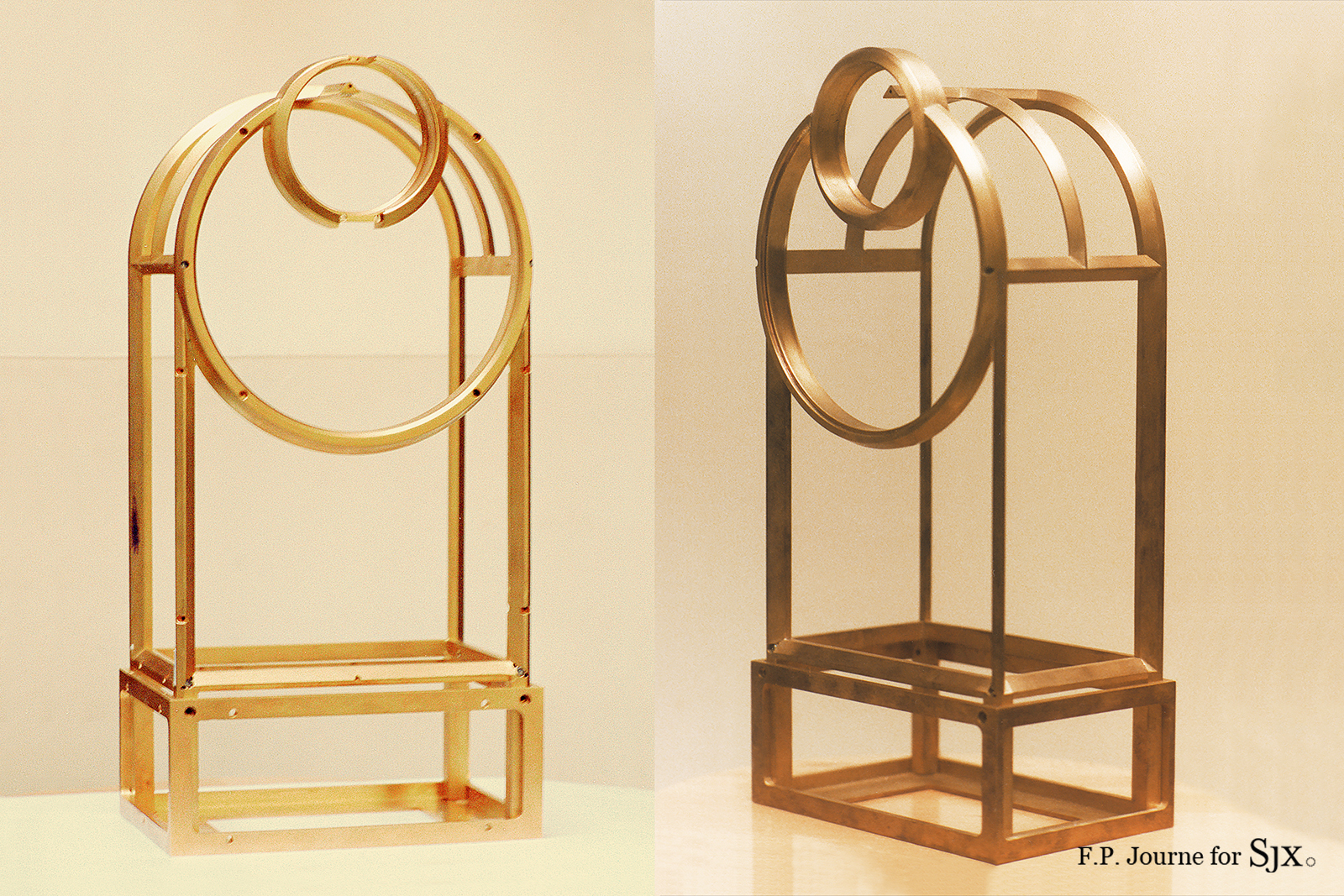
The brass frame for the Sympathique case that was machined at a Parisian jeweller’s workshop
Techniques Horlogères Appliquées (THA)
But even as he was completing the three clocks for Asprey, François-Paul wanted to be more than a solo watchmaker producing clocks in a tiny workshop – he knew he was destined for more than that. Like A.-L. Breguet, he wanted to build a company. As he was building the first Sympathique clocks in the late 1980s, he was already working towards an enterprise, albeit one that would be a supplier to other brands, rather than his own marque.
The genesis of the Sympathique clock underlines François-Paul’s vision of being more than just a watchmaker making watches. In fact, commercialisation of the Sympathique clock was the impetus for establishing Techniques Horlogères Appliquées (THA).
“At the time, I thought John Asprey had enough clients to justify producing multiple Sympathique clocks,” says François-Paul, “But I was working alone in my workshop in Paris, which was risky.”
“I built the first Asprey Sympathique entirely myself, before THA was founded in 1989,” he adds, “If something happened to me, I’d have no backup or other opportunities for income.”
“Around 1987, 1988, I told myself, ‘I need to organize something more substantial’ as I didn’t want to work alone anymore — I wanted to build a company,” explains François-Paul, “I travelled around to explore opportunities and try to organise something.”
“I knew [clockmaker] Dominique Mouret, and I knew Denis Flageollet because Denis occasionally visited Paris and he had just left Michel Parmigiani,” says François-Paul, “At the time, I also worked with [English clock expert] Simon Bull, who was also part of our circle in Paris.”
And for the business side of things, François-Paul turned to an old friend. “I was also working with Pascal Courteault [an entrepreneur in the watch industry] at the time,” he continues, “Pascal was a good friend, but rather quickly, he became the opposite.”

Dial detail of the Breguet Sympathique no.1
“I didn’t need investors because I had friends who had helped set up the workshop,” he says, “These friends essentially crafted my workshop, including the furnishings and all necessary arrangements to get the company started.”
“We spent about three months setting it up. It wasn’t too expensive — such things were not very costly at the time,” continues François-Paul.
“Some [of those early collaborators] have passed away, but several of them are still around,” he adds, “In fact, I recently spoke with François Junod—he was one of my friends involved back then.”
“Then we officially began operations in September 1989. I was creating the [organisation] for building the Sympathique, but the project was extremely challenging,” says François-Paul, “In fact, the difficulty was so intense that all the people I hired [in September] quit before Christmas.”
“I founded THA and was the director, while Pascal was in charge of administration and management”, he says. The relationship between the pair, however, soon broke down and the pair went their separate ways in 1994.
“I was practically forced out [of THA],” recalls François-Paul, “[Pascal Courteault] intentionally increased the company’s capital to reduce my shareholding and push me out. I didn’t sell my shares, and in the end, they paid me out after THA was sold to Bucherer [in 2007].”
THA was not alone among François-Paul’s early attempts at building a business. He and John Asprey briefly considered buying Breguet in the mid-1980s, and he then briefly owned a stake in Leroy in the early 1990s that turned out to be a fruitless endeavour for him.
“When I left [THA] in 1994, I decided I was going to pursue my own projects,”, he continues, “And that’s when I started drawing [my first tourbillon wristwatch] on a napkin.”
“It was fortunate that I eventually had disagreements with the group, because I would never have pursued this direction otherwise.”
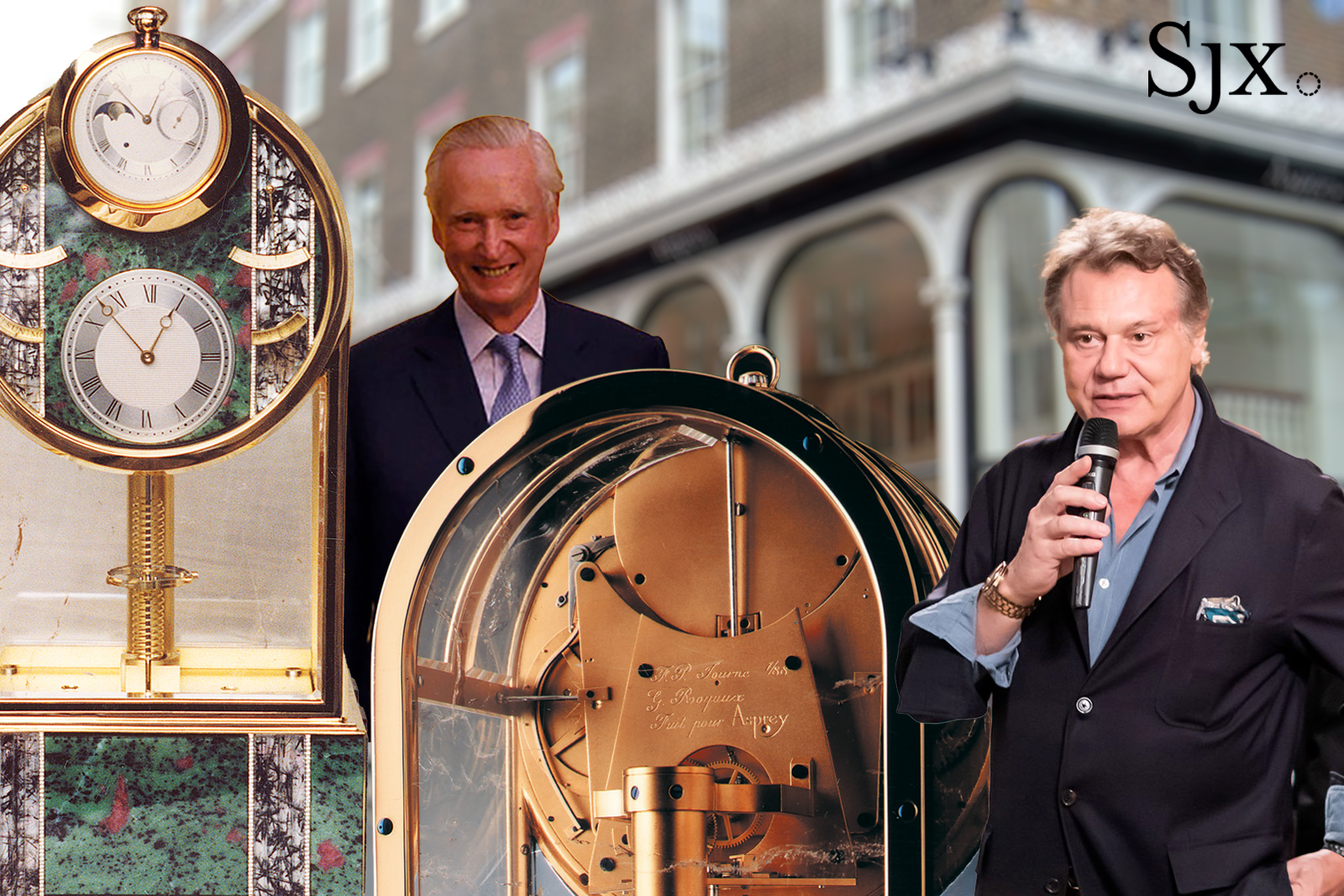
John Asprey (centre left) with the former Asprey store (background) that is now a Hermes boutique
Homage to A.-L. Breguet
If history had unfolded differently, François-Paul might today be running a brand that does not bear his name. And that brand would have most likely gotten off the ground as a supplier to other brands, beginning with Breguet’s order for 20 Sympathique clocks.
“I had just presented the third Sympathique clock for Asprey at Basel in 1990, and I was looking for more projects for THA,” says François-Paul, “Then Osvaldo Patrizzi came to see me.”
“After his successful Patek Philippe [150th anniversary] sale in 1989, Patrizzi was preparing the Breguet thematic auction [The Art of Breguet] in 1991,” he continues, “He wanted prestigious, standout pieces for his auction.”
“At around 6 pm [on that day at Basel], I went to see François Bodet [who was the running Breguet], and we agreed to do something special for Patrizzi,” he says, “But I realised quickly that it would be a very expensive project.”
“Eventually, we signed a contract with Breguet to produce 20 [Sympathique clocks] – 19 in gilded brass and the very first one in gold,” he continues, “But Breguet didn’t want to purchase the very first one, as it was too expensive, so the gold clock remained the property of THA.”
“We eventually sold [the first clock] at Antiquorum, though for less than we expected. The timing was unfortunate — it was April 1991, right during the Gulf War.”
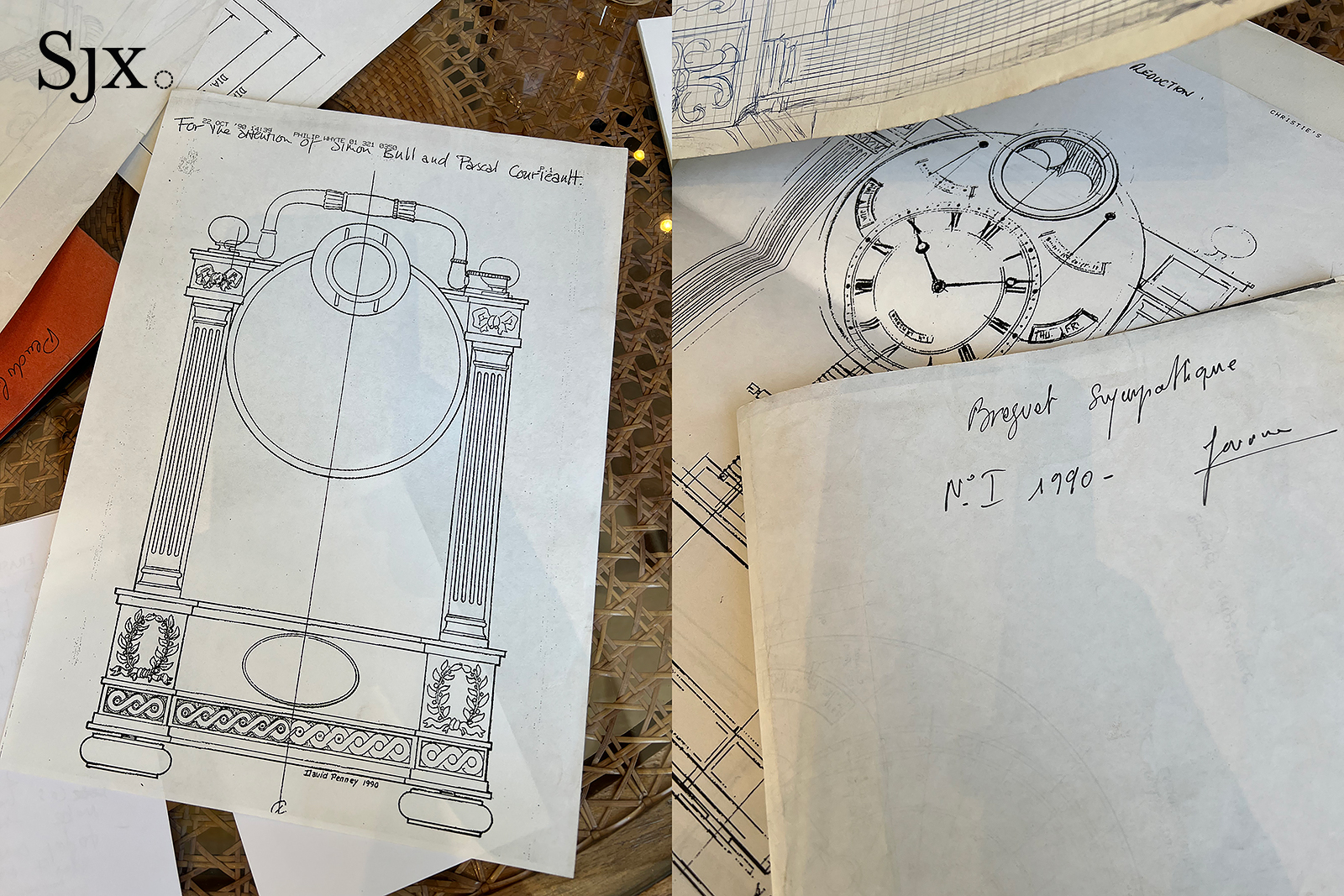
Drawings for the Breguet Sympathique, including early sketches by François-Paul Journe
Building a Breguet
The Breguet Sympathique evolved out of the Asprey clocks. “The very first drawing I made for the [Breguet Sympathique] is dated 1990”, says François-Paul, “I made the initial plans for the construction, then new plans for CNC machining of the case.”
“I also did the first drawing of the clock and I sent it to [a horological illustrator in the United Kingdom]; I really liked the drawings [he] did for George Daniels,” he explains, “And I wanted to add something to my existing vision.”

“What David did was very good but we had to discuss it many times; it wasn’t done in one go,” continues François-Paul, “He made a drawing but I didn’t like it, so I changed it because I thought the case was too vertical and straight [in his drawing], so I added this sloping angle, just one degree, one-and-a-half degrees, only changing the angle slightly, like in classical architecture, giving the clock a ‘seat’.”
“What David did well was this: I initially designed the watch to sit vertical, and he tilted it backwards. I used this tilt to create a slot so you can pass the bracelet through it,” continues François-Paul, “That’s why I invented the first [quick-release] mechanism for [the interchangeable bracelet and strap].”


The Sympathique movement was entirely François-Paul’s work. “All of [the movement] was a challenge, but the hardest to achieve was make it run for eight days,” he explains, “As I had to design the whole movement and make it work reliably over that time.”
“Then there was also something else that gave me trouble, specifically in this [Sympathique no. 1],” he adds, “There’s a column and inside the column is the balance staff connected to the balance wheel. There’s a pivot at the bottom of the column, and another on the side, because the mechanism makes a 90-degree turn.”
“Building a 90-degree connection is not easy. At the bottom of the axis, there’s a lot of technical complexity,” he explains, “First, we had to create a 15 cm axis [for the barrel] that would rotate precisely. Then there’s a wheel, screwed on with 90-degree angled teeth, which connects to another gear. The 15 cm axis interacts with the hairspring. Then it connects to a pinion that’s fitted onto the rotating axis [connected to the mainspring] that completes a turn every hour.”
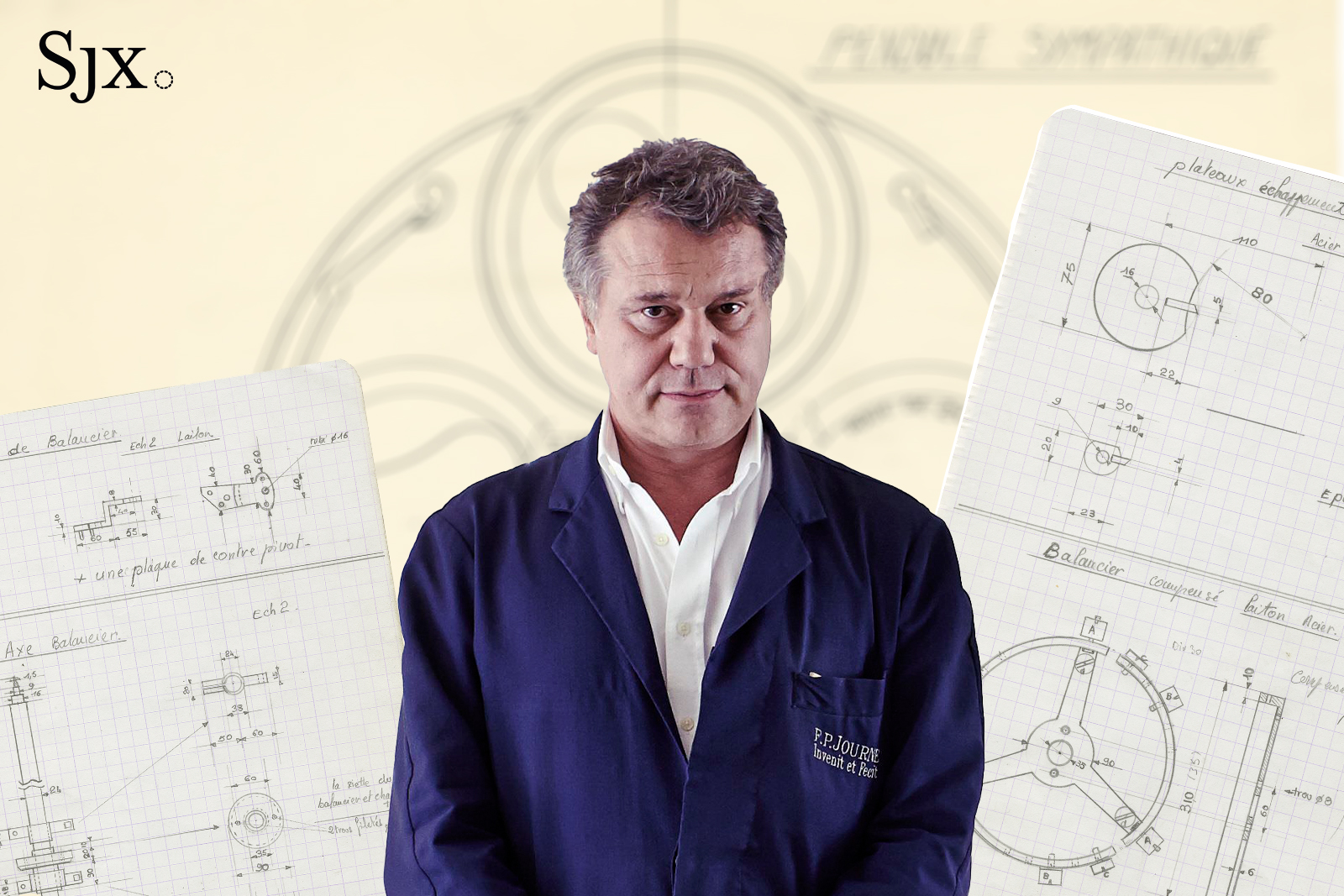
Technical drawings for the balance wheel and balance staff of the Sympathique
“When I was drawing it, I told myself: ‘I’ll make one component per day, and if I can manage to make one part per day, that is a good day’s work.’”
“I even have a box in [my flat in Paris] filled with all the broken components, all the failed parts during development [of the Sympathique clock].”
After all that trial and error, serial production of the Sympathique was realised with François-Paul’s hand-drawn technical plans for the original Sympathique built for John Asprey.
“Because I had already drawn everything [for the first clock], I created this notebook afterward for THA by copying my drawings,” he says, “The notebook included all the lessons I learned during the creation of the Sympathique; that’s why it’s so detailed. I transferred everything into it so THA could make proper technical drawings, with all dimensions [needed for serial production of the clock]”.

With the large order from Breguet, the nascent team François-Paul had assembled at THA proved valuable. “Pierre-André Grimm worked directly on the clock, as did Denis Flageollet and Vianney Halter,” says François-Paul, “Vianney worked on it slightly less than the other two, but he still contributed a little.”
“And myself – I was there to explain how to do things, because they didn’t know how to do it,” he continues, “I had by then already made gold hairsprings, but it was their first time working with them, so they needed guidance.”
Even though his spell at THA was short-lived, François-Paul achieved his goal of commercialising the Sympathique with the 19 made for Breguet, though those were made by his former colleagues at THA.
“I was not involved with the [19] clocks after [the Sympathique no. 1] since THA already had the plans and the capacity to execute them; I wasn’t there anymore by then,” he says, “Once the Sympathique was in the production pipeline, it continued without me.”
“This is the same principle we use today [at F.P. Journe], where I make the prototype,” he adds, “I’m here to invent, to make new things, and to solve problems. That’s why I work closely with the watchmakers.”

The gold cylindrical hairspring of the Breguet Sympathique
Inheriting the mantle
Breguet Sympathique no. 1 is clearly integral to the history of François-Paul and F.P. Journe. But why does he think the clock is worth an astronomical sum?
“Firstly, because it’s a splendid and beautiful object,” he explains, “Secondly, it’s the only clock I ever created for Breguet before they joined the Swatch Group.”

But more than anything else, “It’s a significant personal milestone for me — this symbolises a connection from [Abraham-Louis] Breguet to myself, since it is the only clock I made for Breguet.”
“In a way, it’s as if Breguet personally passed part of his life to me — similar to what George Daniels did.”
Back to top.
